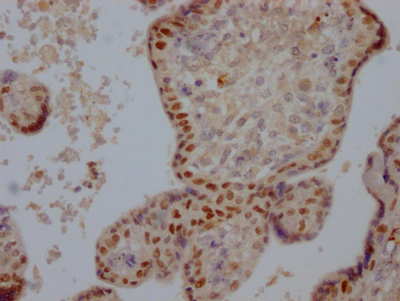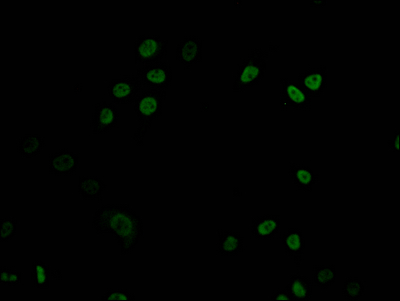The production of the DNMT1 recombinant monoclonal antibody is a four-step process, starting with the sequencing of the DNMT1 monoclonal antibody gene, cloning the gene into a plasmid vector, transfecting the recombinant vector into a host cell line, and then purifying the resulting DNMT1 recombinant monoclonal antibody from the cell culture supernatant using affinity chromatography. The DNMT1 monoclonal antibody is derived from DNMT1 antibody-producing hybridomas and produced using a synthesized peptide from human DNMT1 as the immunogen. This recombinant DNMT1 monoclonal antibody is highly recommended for ELISA, IHC, and IF applications to detect human DNMT1 protein.
DNMT1 is responsible for copying the DNA methylation pattern from the parent strand to the daughter strand during DNA replication, ensuring that the methylation pattern is faithfully passed on to the next generation of cells. This modification is critical for gene expression regulation, genomic imprinting, and X-chromosome inactivation. DNMT1 is highly expressed in proliferating cells, including embryonic stem cells and cancer cells, where it plays a crucial role in regulating gene expression and cellular differentiation. Dysregulation of DNMT1 has been associated with a variety of diseases, including cancer and neurological disorders.







